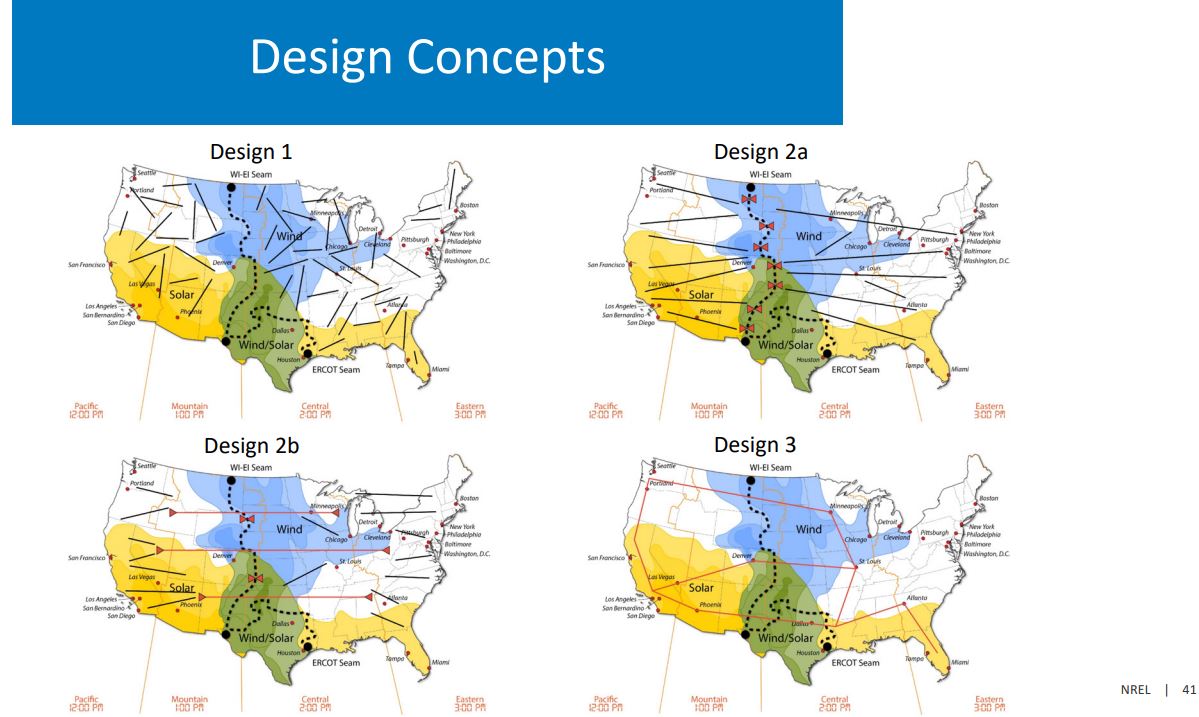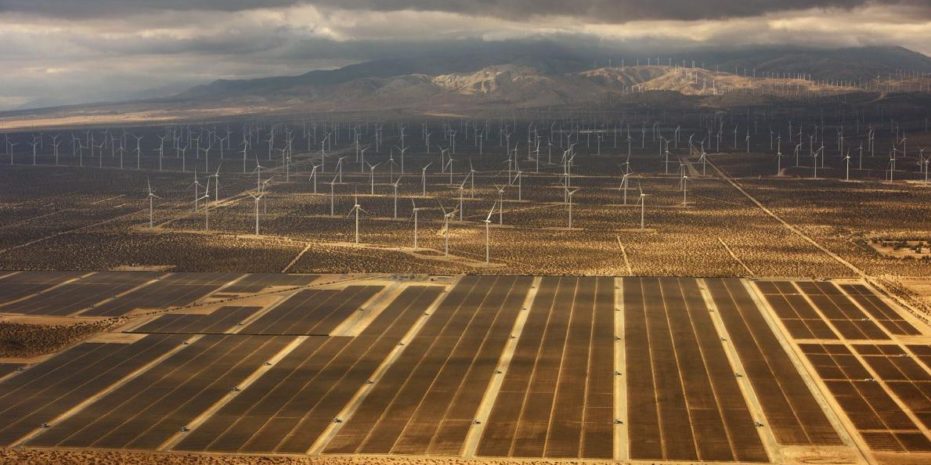There once was a study that highlighted a path to 80% wind+solar with 12 hours of batteries, but within that university research was another model – one that included 100% wind+solar with minimal amounts of energy storage if the United States were to build nationwide high voltage direct current (HVDC) power lines.
With this great potential in mind, the Wind Solar Alliance has launched itself as a new group, and have put forth a report, Corporate Renewable Procurement and Transmission Planning: Communicating Demand to RTOs Necessary to secure future Procurement Options (22 page .pdf).
The Wind Solar Alliance report offers, “specific solutions and steps that corporate purchasers of energy can take, as well as new data on corporations’ renewable energy procurement to date.”

The report starts by highlighting the success of ERCOT, when in 2005 Republican State Senator Troy Frasier introduced Senate Bill 20, which directed state regulators to implement a large scale transmission build with a goal of “creating more capacity for renewables while benefiting consumers.” Transmission line construction in the Competitive Renewable Energy Zones (CREZ) identified by ERCOT’s study began in 2009, taking five years to complete at a cost of $6.9 billion.
This network of power lines is credited with enabling Texas to become the leading wind installation state in the United States, with huge potential for solar power to complement it.
The report then describes different grid regions, some of the ongoing dynamics of grid expansion in those areas, and ends with two specific action items for corporations:
- Joining RTOs as voting members
- Working with advocacy groups that are active at the RTO level.

The National Renewable Energy Lab (NREL) InterconnectionS Seam Study (.pdf)has looked at multiple designs for interconnection the three main power grids in the United States. These models suggest significant economics benefits as we pump solar east and west before and after the sun stands overhead, and push wind toward the coasts from the Midwest.
This content is protected by copyright and may not be reused. If you want to cooperate with us and would like to reuse some of our content, please contact: editors@pv-magazine.com.









By submitting this form you agree to pv magazine using your data for the purposes of publishing your comment.
Your personal data will only be disclosed or otherwise transmitted to third parties for the purposes of spam filtering or if this is necessary for technical maintenance of the website. Any other transfer to third parties will not take place unless this is justified on the basis of applicable data protection regulations or if pv magazine is legally obliged to do so.
You may revoke this consent at any time with effect for the future, in which case your personal data will be deleted immediately. Otherwise, your data will be deleted if pv magazine has processed your request or the purpose of data storage is fulfilled.
Further information on data privacy can be found in our Data Protection Policy.